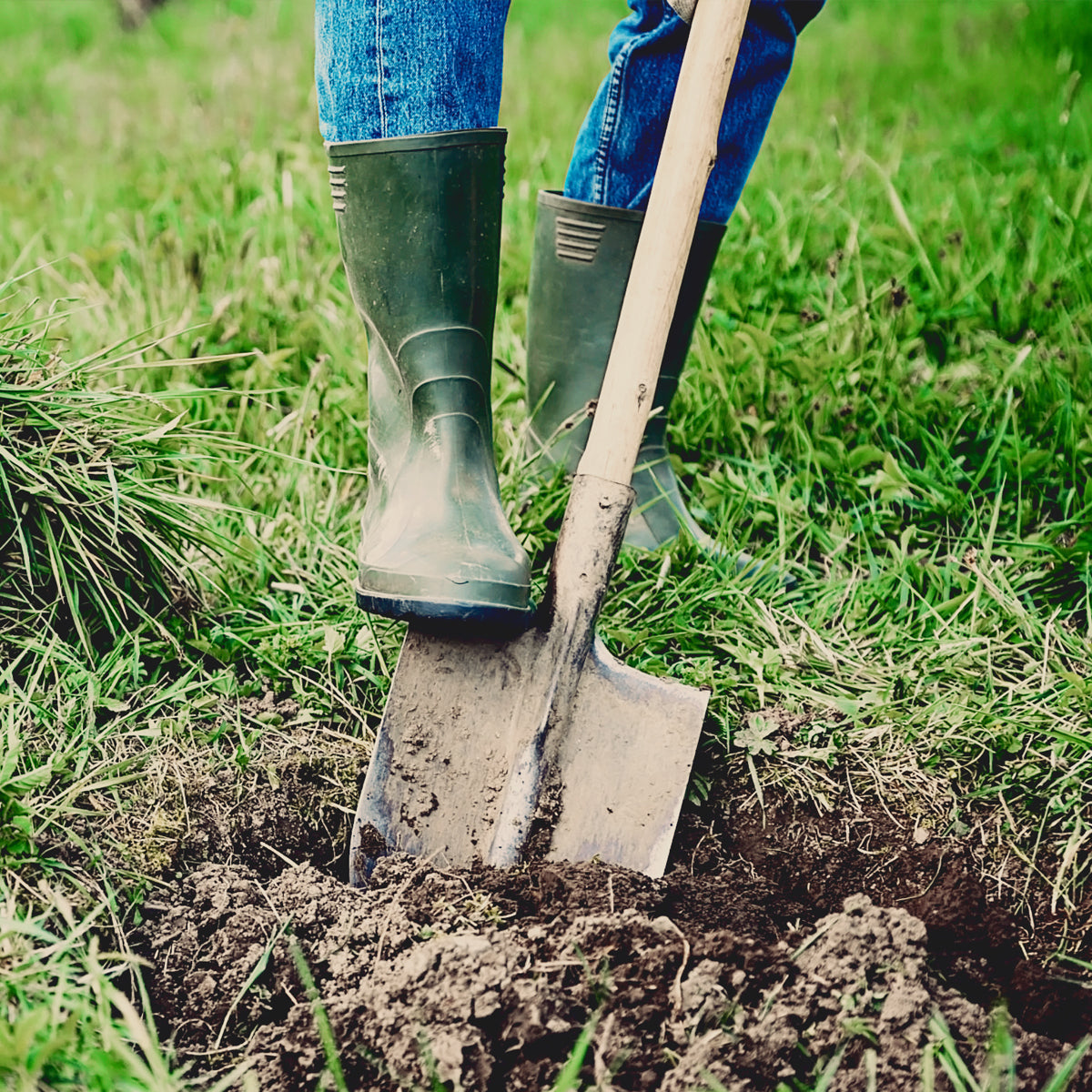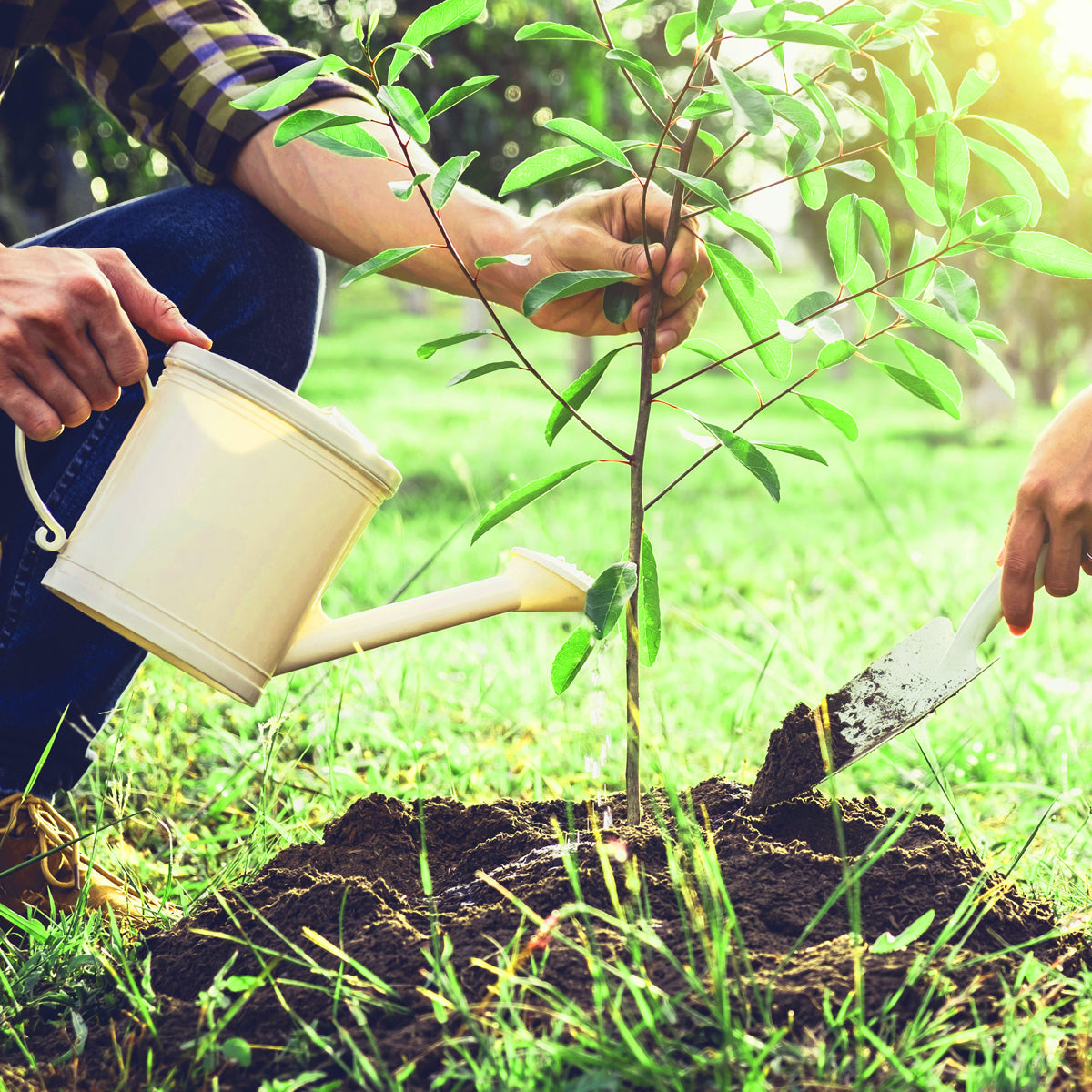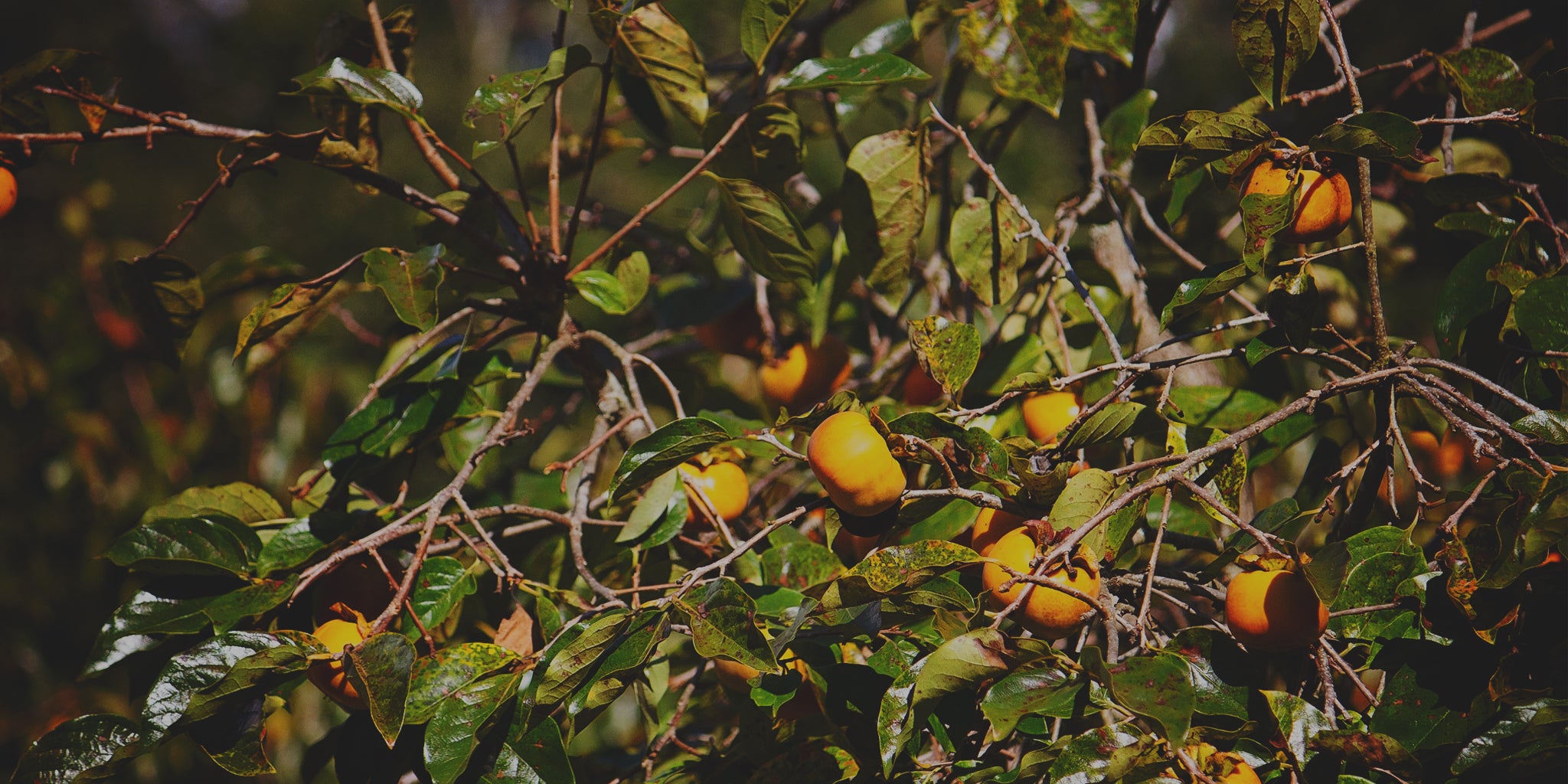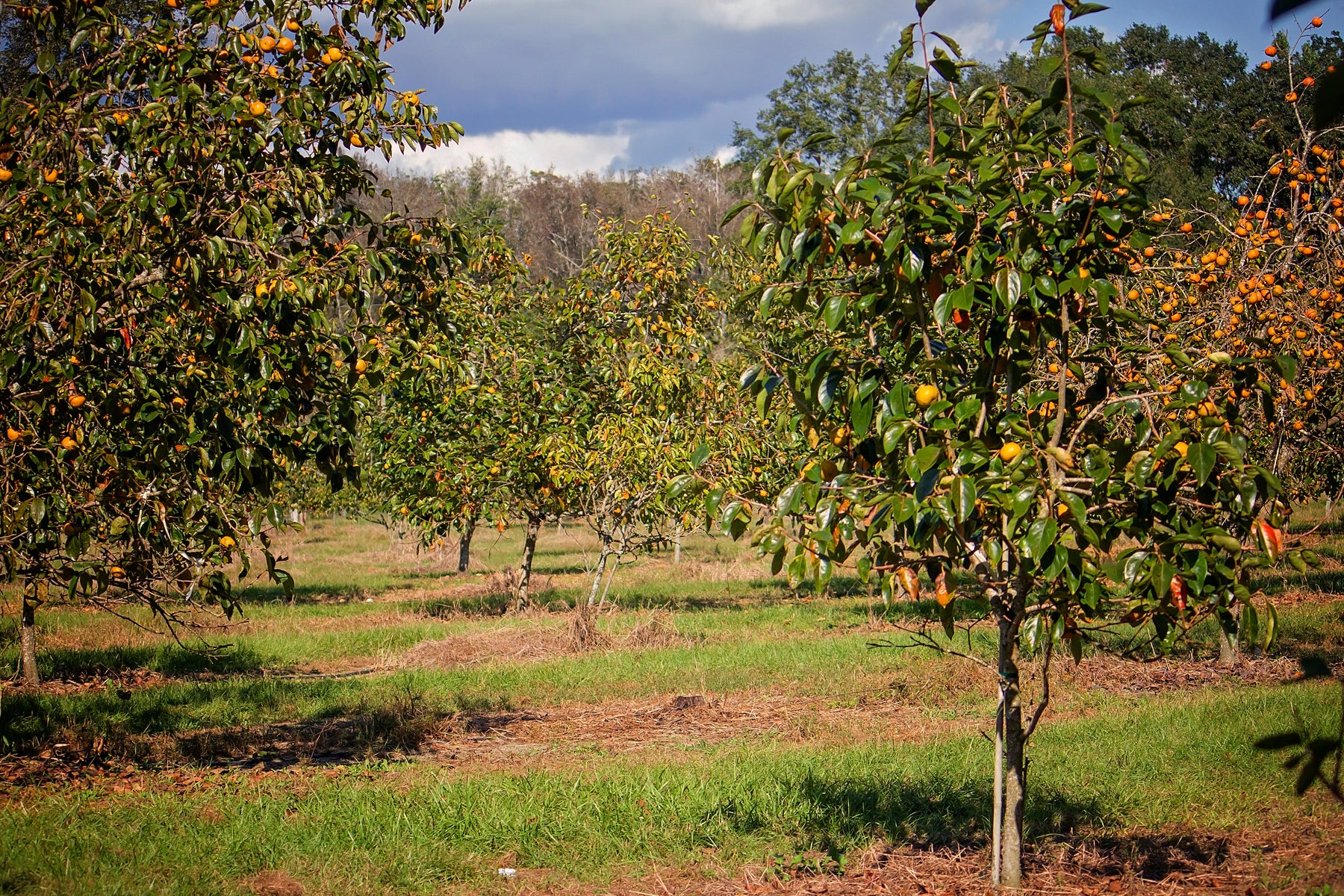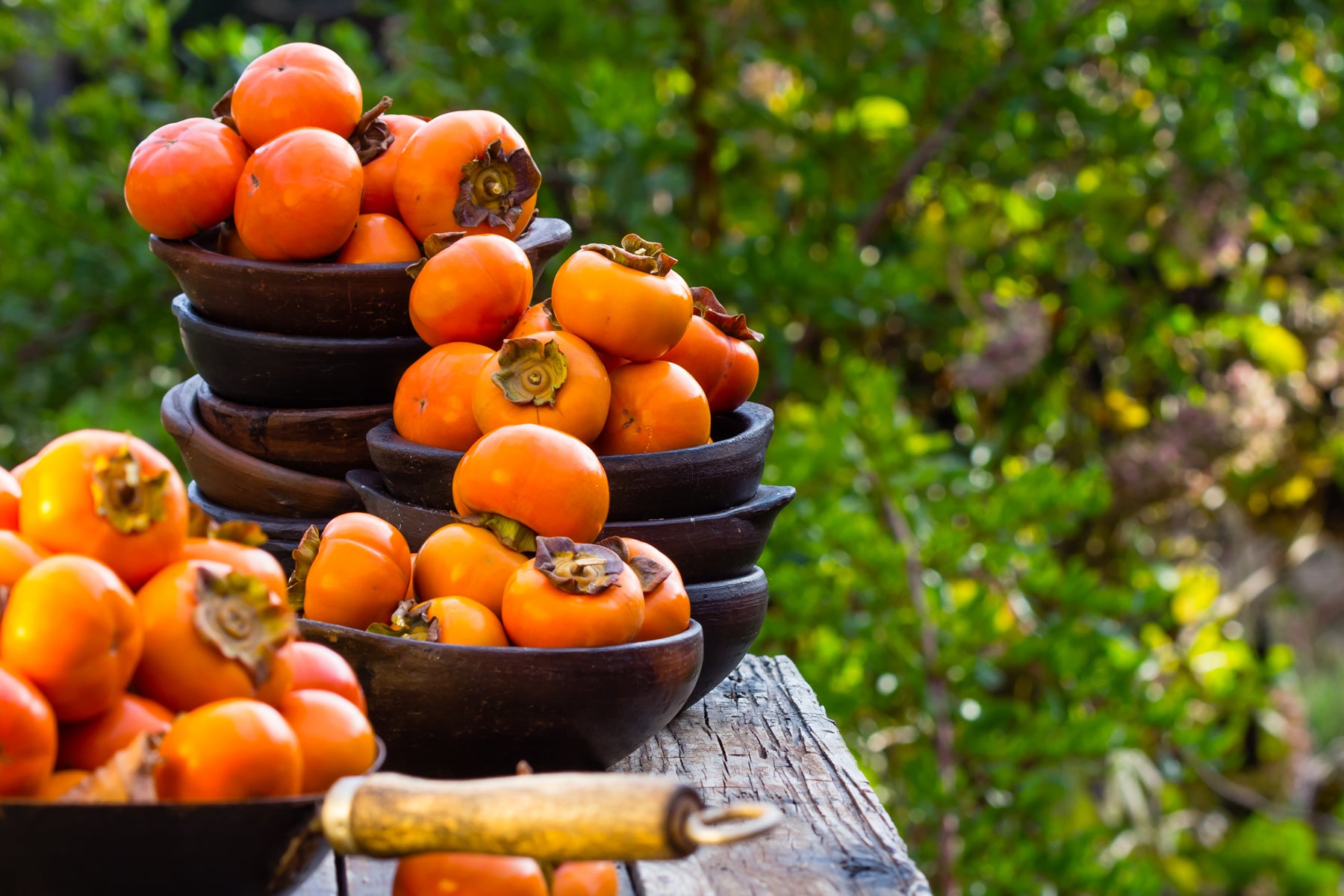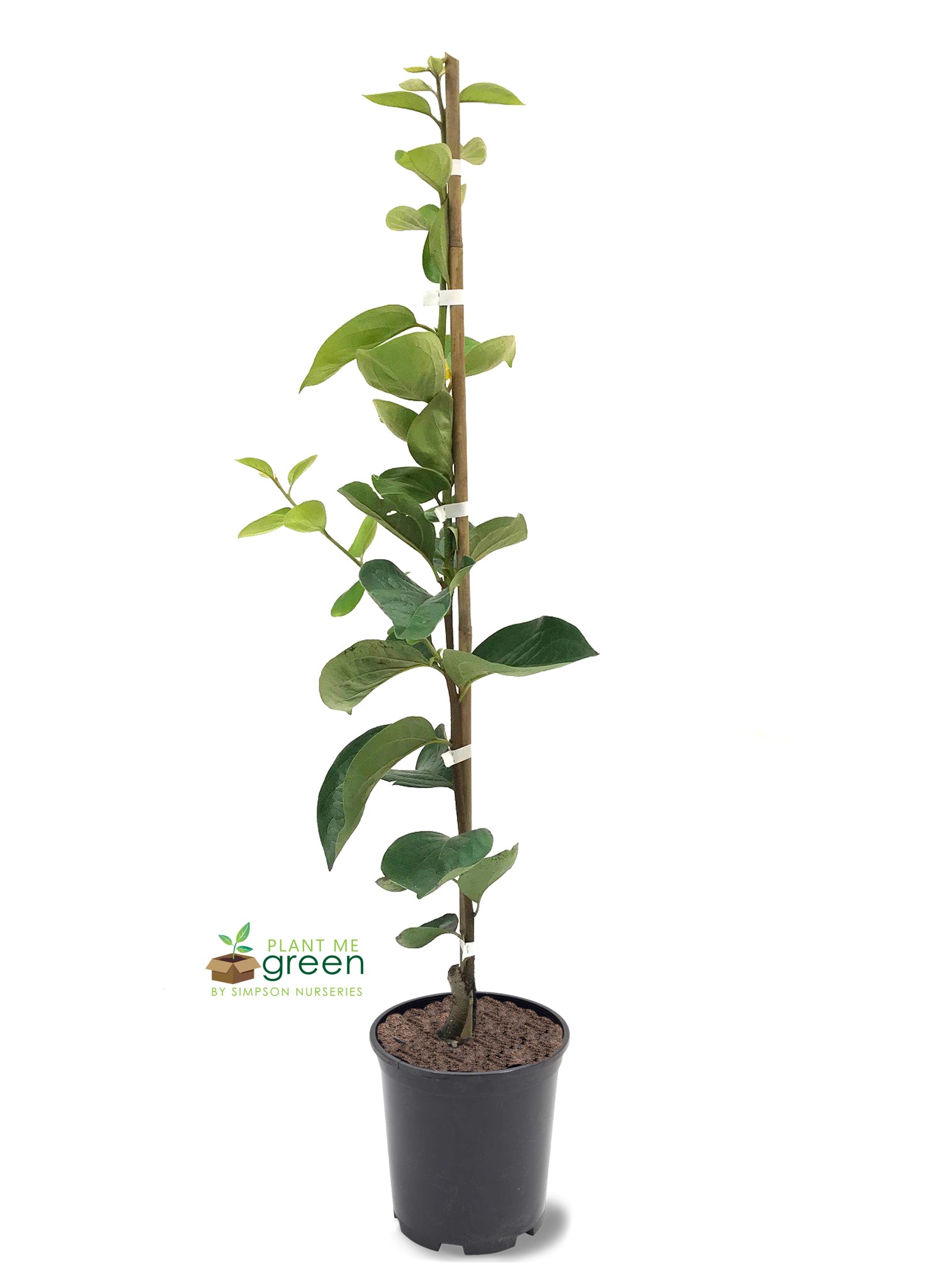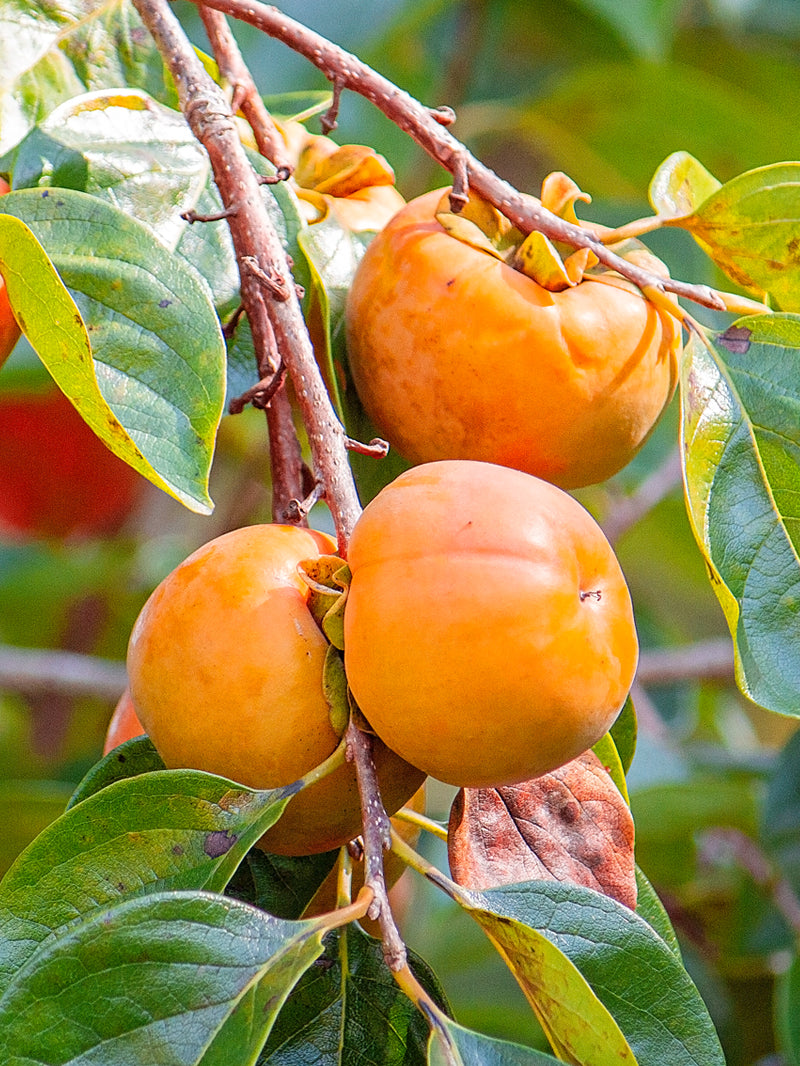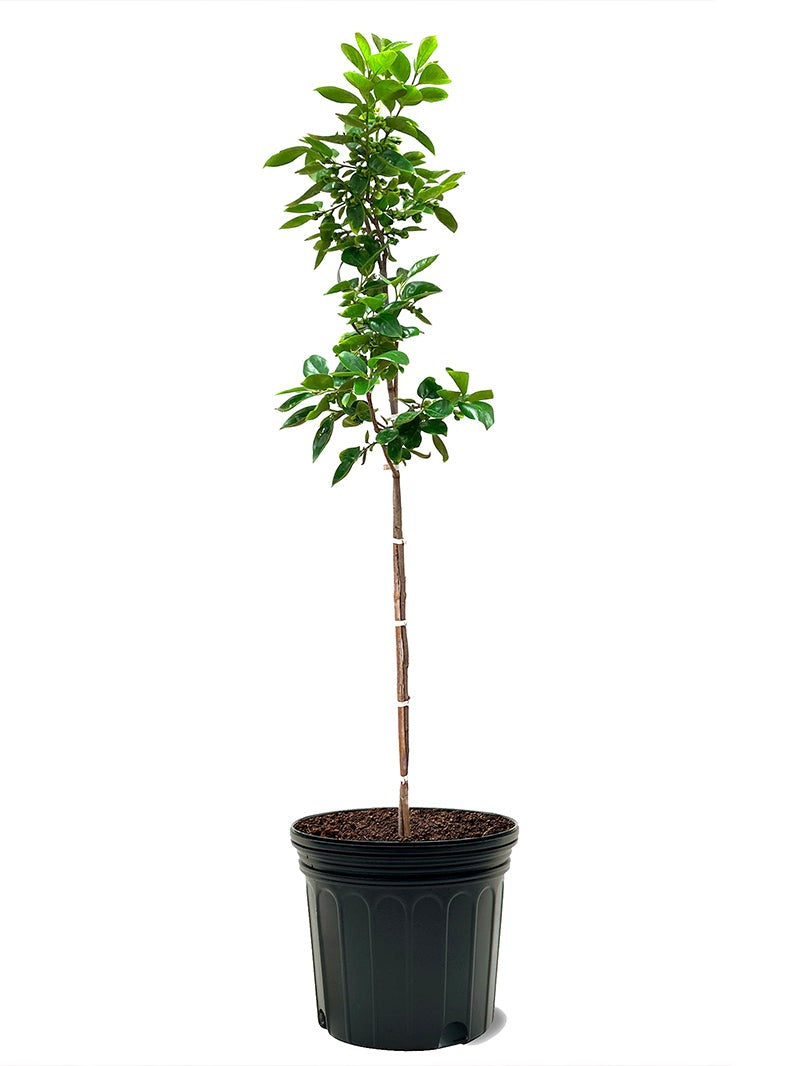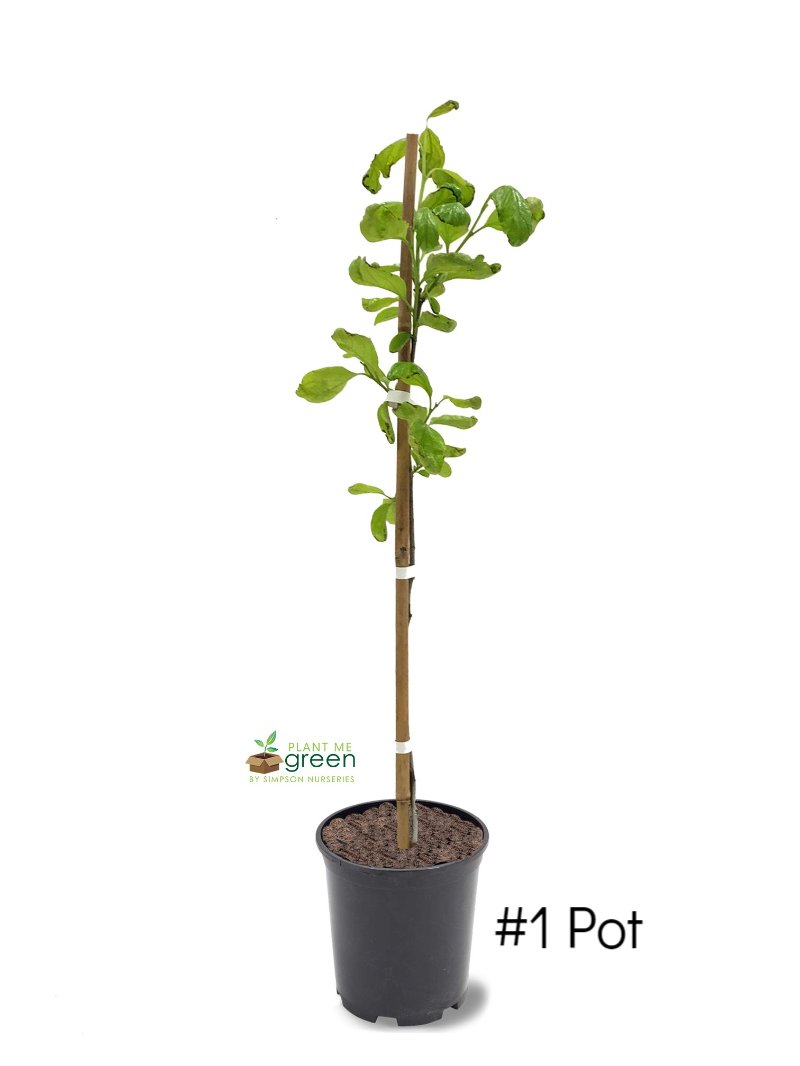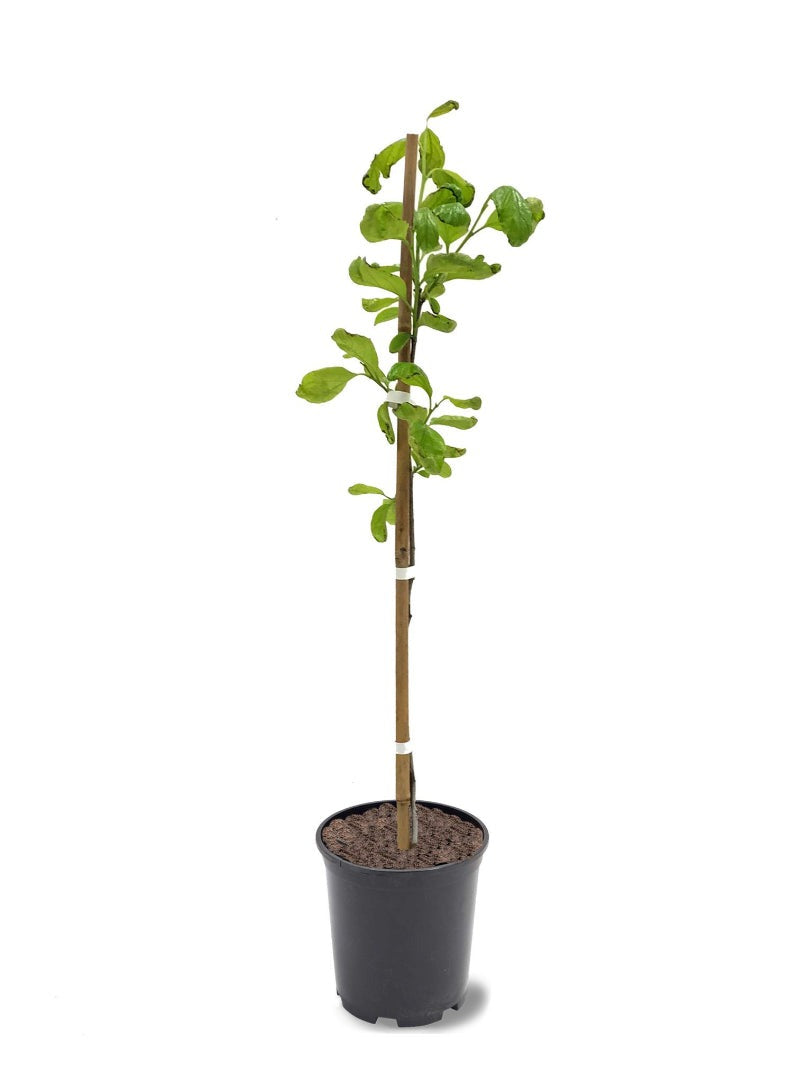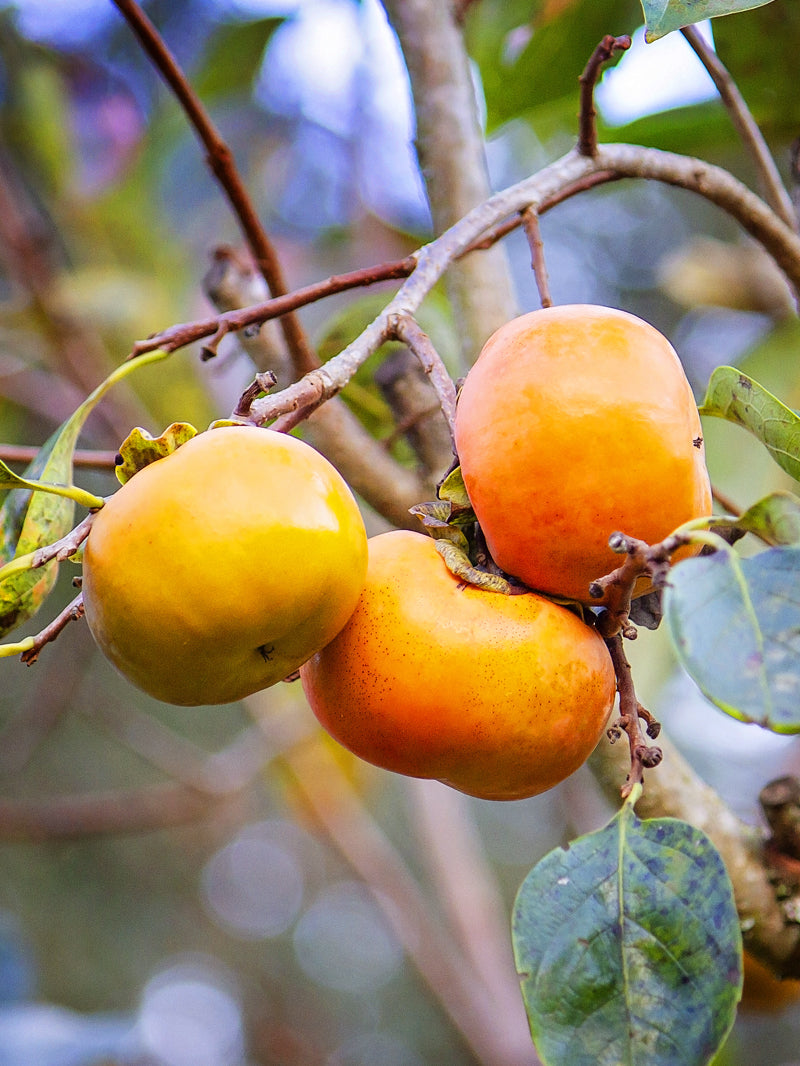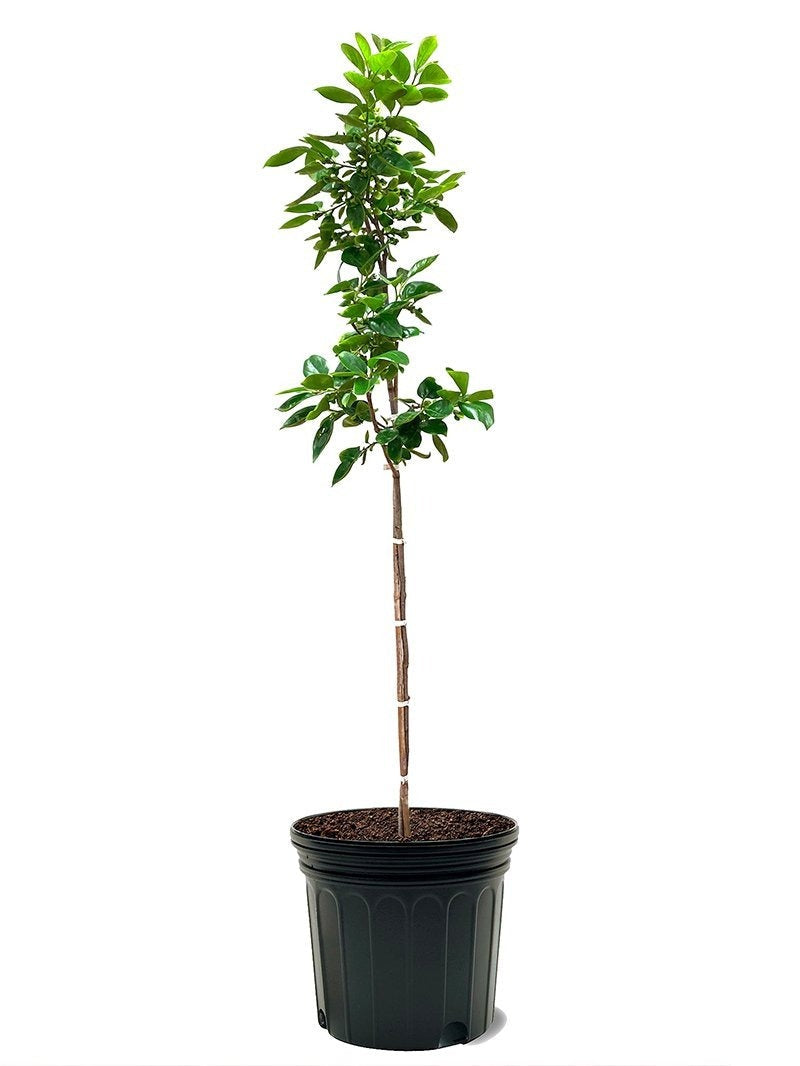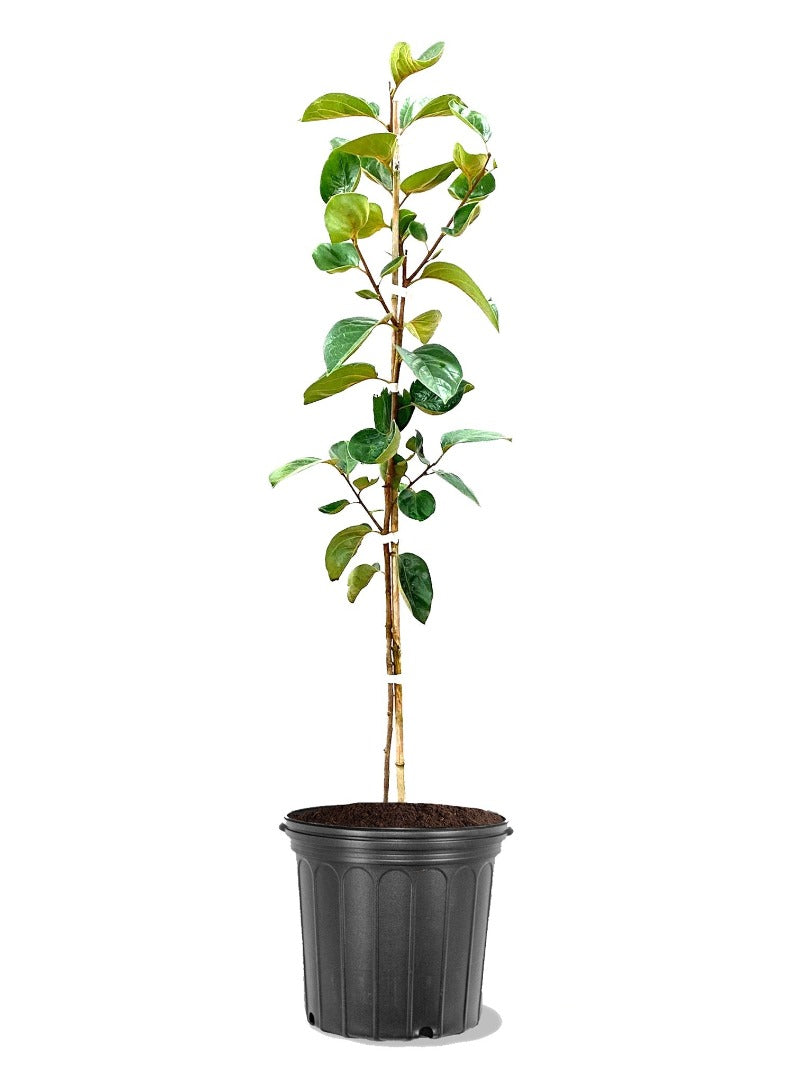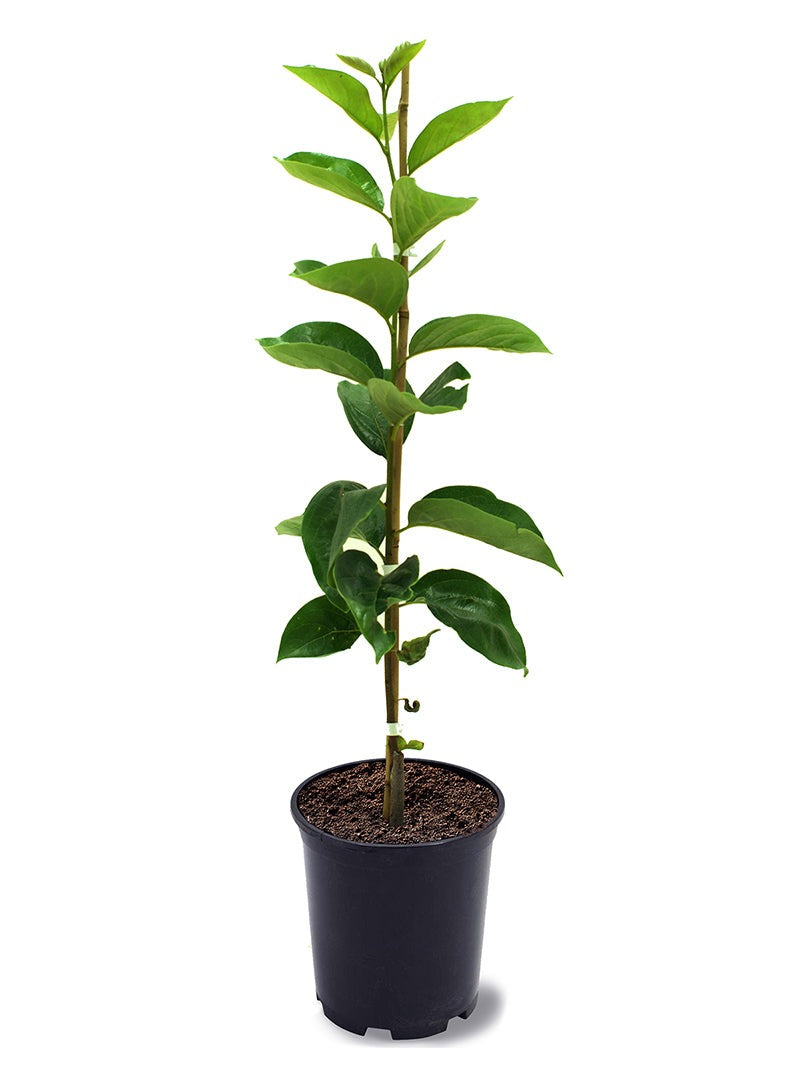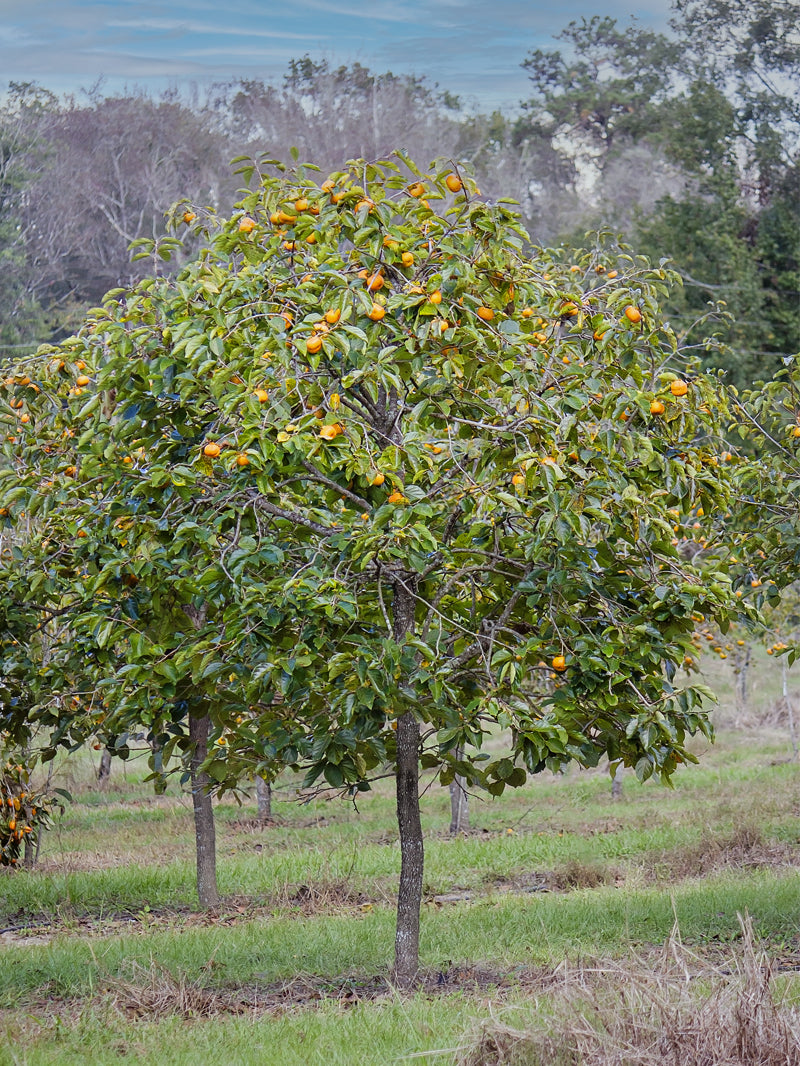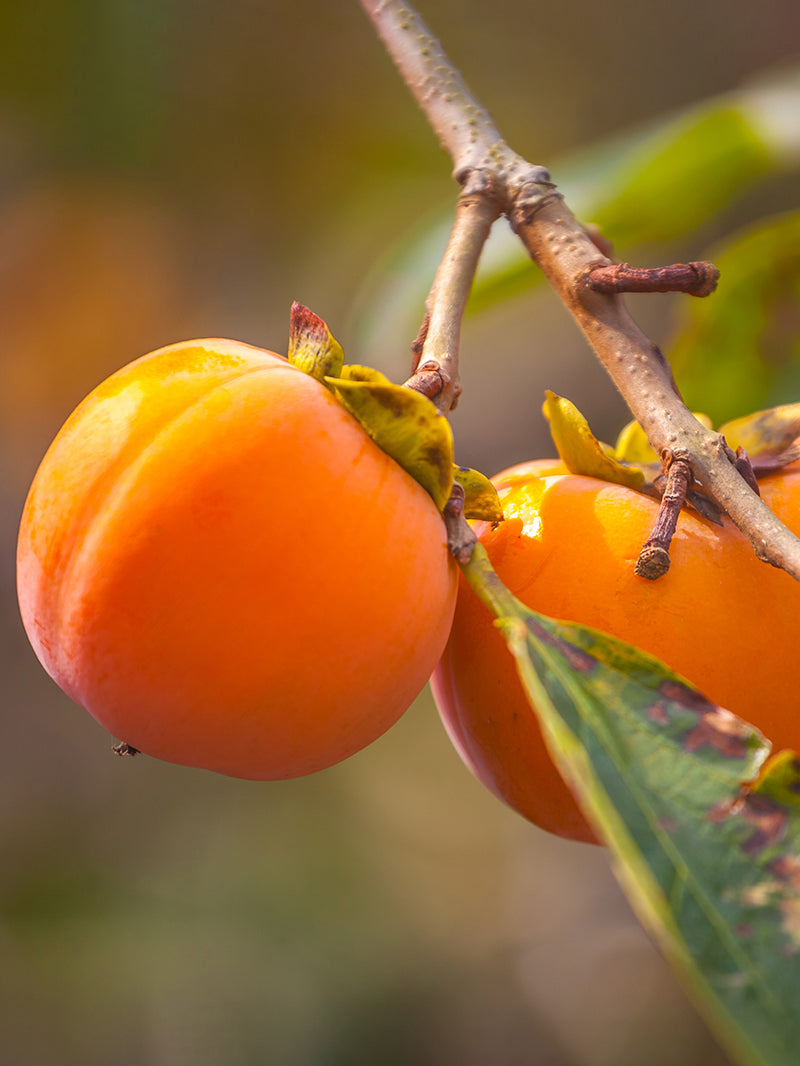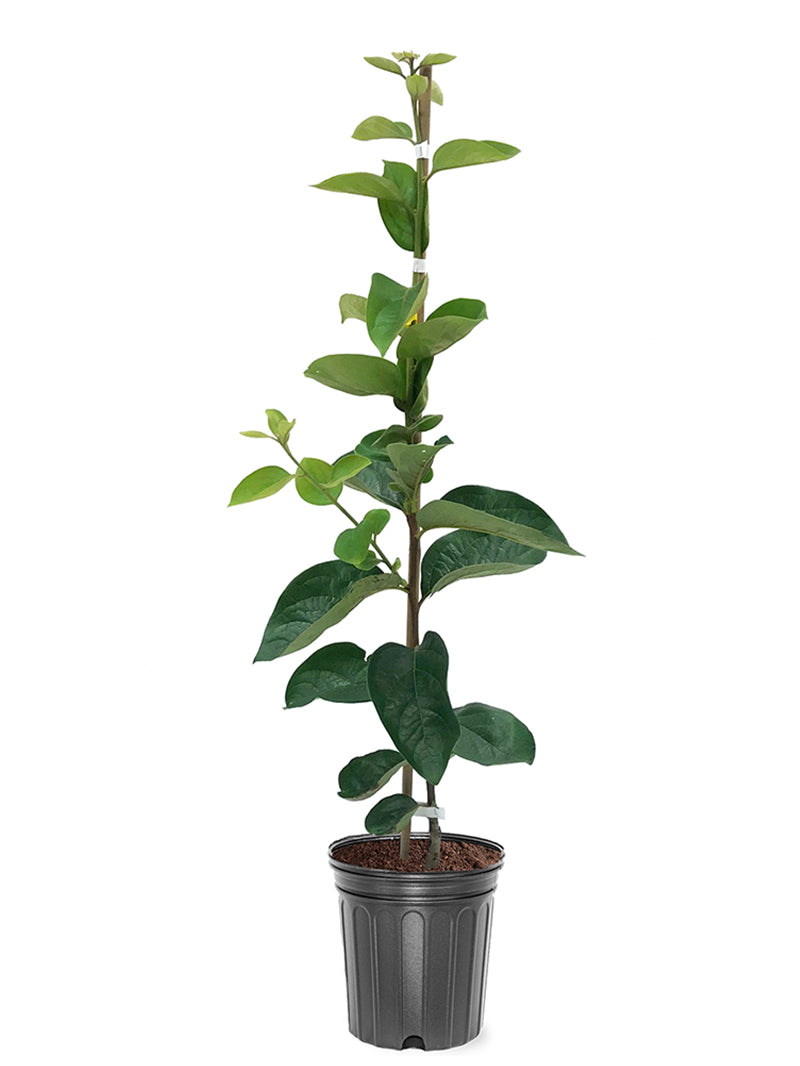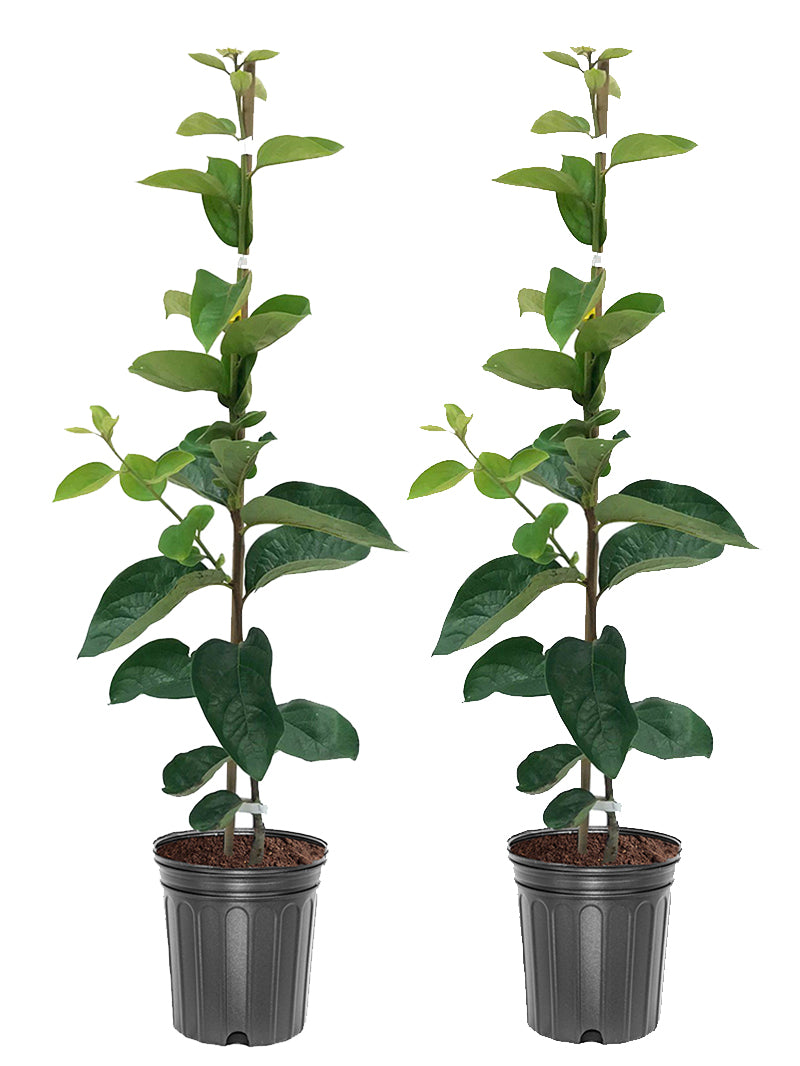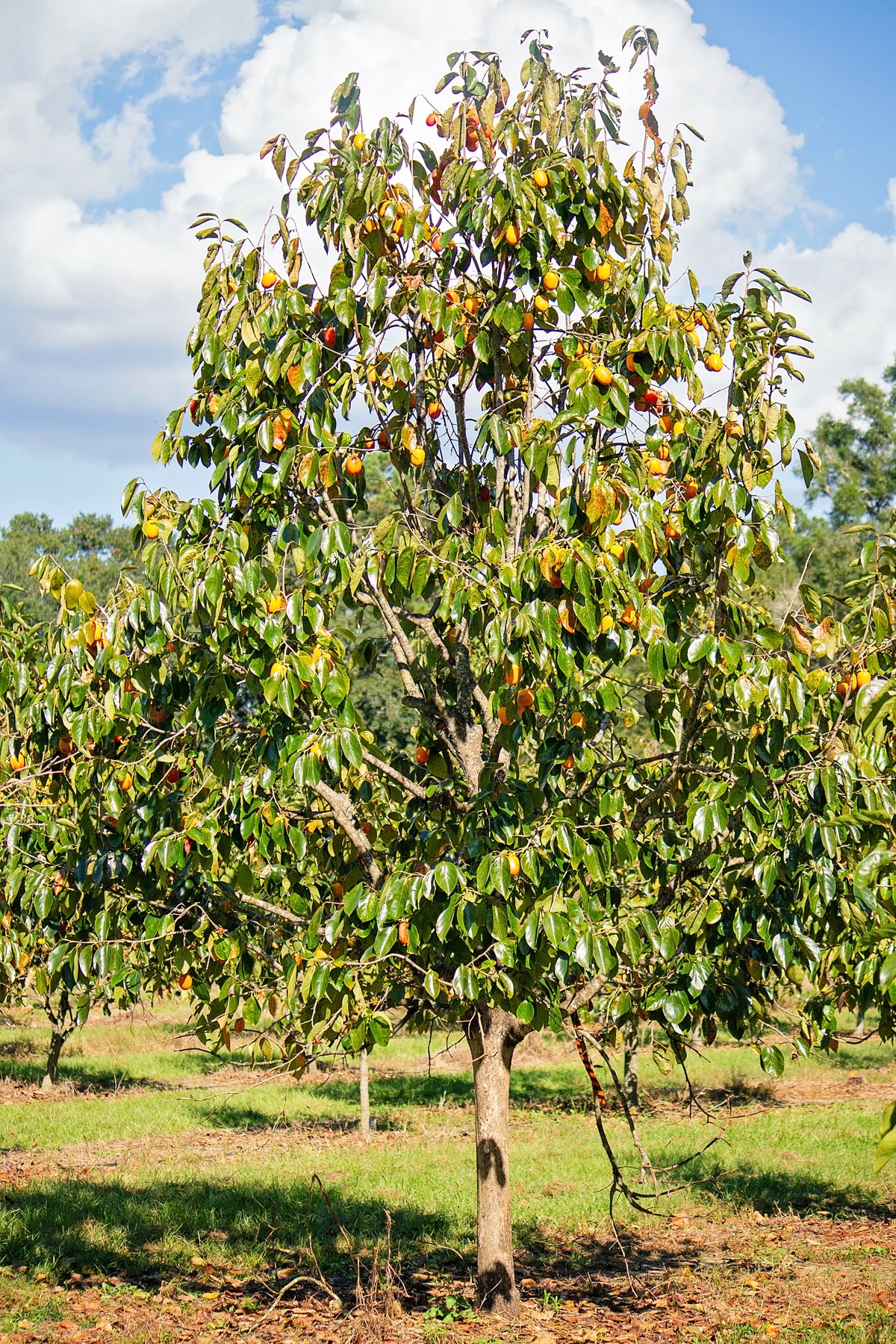
Planning your persimmon tree site
When picking a location for your tree, try to find a well-drained area with sandy loam soil. This is the best for persimmons, but as long as there is good drainage your tree should thrive. Place your tree in full sun for the best growth and production rate. Avoid frost pockets- trees may be damaged by unseasonable frosts.
Soil Prep for Your Persimmon Tree
It’s time to start digging! First, you will need to dig a hole three times the width of the size of the pot, and just as deep as the root ball. Persimmon trees grow best in loamy, organically-rich soils. Light, sandy soils are not suitable, but they will grow on many other soil types and are tolerant of heavy clay soils if drainage is good. In soil with low fertility or compact clay it'll be worth your time to mix in some organic compost to the native soil. They like the soil to hold a good supply of water, especially when the fruits are developing in summer, but not so much water that the soil stays constantly soggy or wet. Persimmon trees grow best in a slightly acid to neutral soil ranging between 6.0 and 6.5 on the pH scale. Most average garden soils fall between a pH range of 6.0 to 7.0. The best and most fruits will be produced when persimmon trees are growing in full sun. However, trees that receive a little shade during the hottest part of summer days will still produce good crops of fruit.
If desired, construct a water basin at the base of the tree about 36 inches in diameter. Mulch in the spring & summer time should be about 4-6 inches deep. Keep mulch a few inches away from the trunk of the tree. Good mulch for persimmons is weed-free hay and pine bark.
Spacing for persimmons depends upon the desired use in the landscape. Trees should be a minimum of 10 foot apart for small growers and for larger growers, space out at 20 feet.
To protect your tree, please provide a 4 foot diameter weed and grass-free area. This will provide a water basin and minimize anything from taking water and nutrients from the tree. During spring and summer, 4-6 inches of mulch should be placed a few inches away from the trunk to provide good air circulation. The best mixture of mulch during spring is weed- free hay and compost. During summer time try a mixture of grass clipping, and weed- free hay. If appropriate, add some pine bark or pine needles for acidity.
Fertilizer for Persimmon Trees
Our best advice at planting time: do not fertilize. Young persimmon trees are very sensitive to fertilizers. After a few years, if the mature leaves are not deep green and shoot growth is less than a foot per year, apply a balanced fertilizer (such as a 10-10-10) in late winter or early spring.
WHEN TO FERTILIZE PERSIMMON TREES:
In USDA Zones 8-9: Fertilize 3x a year— in late February, late May and late July/early August.
In USDA Zones 6-7: Further north, fertilize 1x a year in March or after the buds break. This will probably cause early fruit drop, but growth is more important at this stage on their development.
ALL USDA Zones: NEVER fertilize after August as this will start new growth too late in the year and lead to frost damage. In the third year, switch to a low nitrogen fertilizer (first number must be less than 5) and apply only in late February (Zones 8-9) or March (Zones 6-7).
Keep in mind that with persimmons, excessive fertilizing may cause premature fruit drop. Chemical or organic, whatever you may choose makes sure that it contains iron, zinc, manganese, magnesium, molybdenum, copper and boron. These elements are crucial to the plants growth. Application rates may vary. The fertilizer should be spread under the entire canopy, avoiding 5 inches around the trunk.
|
10-10-10 or 10-0-10 with minerals |
1 cup for each year of tree’s life -Max out at 9 cups for mature tree |
|
Espoma Citrus Tone (Organic) |
6 cups for 1 year old 10 cups for 2 year old (4-6 ft) 18 cups for 7-9 ft tree 24 cups for tree over 9 ft |
Water For Persimmon Tree
The first year is a critical time for your new persimmon. During this time, the tree is considered newly established, meaning it is very critical for your plant to be watered. On light/sandy soil water 2x a week, but on clay soil 1x a week will do. When watering your tree be sure to soak the root system entirely. Whether you have a sophisticated automatic irrigation system, or are just using a watering can or bucket, it is better to water periodically and allow the soil to dry out a bit between waterings. Fruit trees do not expect to be growing in perpetually wet soil. Over-watering can be just as harmful as lack of watering. Always take rain water into account before deciding to water your tree by hand/irrigation.
Once the tree is established, it should receive at least one inch of water each week. After the first year you don't need to be quite as vigilant as the tree will have established its root system. As a rule of thumb the period when fruit trees need most water is just before, during, and just after the blossom period (about 6 weeks in total) and in the period leading up to the harvest. Water regularly, especially during dry spells. Lack of rain/water can cause fruit to prematurely drop if not well irrigated during the dry spell. Keep at least 4 feet around the persimmon clear of grass and weeds, for less competition for water.
Pruning Persimmon Trees
Although you can prune the tree to a central leader when young, very little pruning is required with older growing persimmons as long as they are bearing fruit and corrective pruning is not needed. Corrective pruning consists of removing broken, interfering, dead, or diseased branches. The best time to prune is late winter or early spring, when the tree is dormant. To improve structure and reduce the chance of alternate bearing, prune once a year. Trim all other branches by 1/3 to a bud that is facing the direction you would like the tree to grow. An open vase shape is best.
Young Persimmon Tree (1 to 5 Years Old): To encourage a strong main branch structure, thin new shoots/branches each year until the tree is roughly 5 years old. Prune in a way so that the main branches spread out evenly from the main trunk and do not cross one another. You want to achieve a roughly round internal branch architecture where the main branches face away from the trunk. Leave branches with about one foot of space between them to increase the amount of sunlight that reaches the fruit.
Older Persimmon Tree (over 5 years old): Prune the tree lightly each year or so removing dead wood, weak branching, sucker growth from the base of the trunk, horizontal shoots growing from the main trunk, and any crowding, crossing branches. When removing a damaged or dead branch, cut back to a point of healthy wood, down to the parent branch, or down to the main trunk as needed or desired. TIP: Smaller branches and stems can be cut with hand pruners or lopper prunes however, when cutting back larger branches over 1-inch in diameter, you'll need to use a sharp pruning saw to ensure clean cuts without tearing the bark.
Rejuvenation Pruning: Older persimmon trees that are not performing well can be pruned more severely to rejuvenate the tree and stimulate new fruiting branch growth. When rejuvenation pruning, you'll be removing about 1/3 of the oldest branches in the canopy of the tree. Spread the cuts evenly through the canopy so that the new growth will be well distributed for a balanced branch system.
Blog: Persimmon Care Articles
PREMATURE FRUIT DROP
As spring time flourishes and you see your new fruit form, you start preparing for what you will do with that first delicious bite. And then out of nowhere (it seems!) you come out one morning to find that beloved first fruit on the ground, before it was ripe. So what has caused this? We list the top 5 for you to utilize as you troubleshoot to find a solution.
PERSIMMON PLANTING TIPS
Persimmons are successfully grown in deep, well-drained, slightly acidic soil. They also have a strong taproot, so it requires a deeper planting hole than most trees. Staking trees when young also helps keep a straight form. Don’t be alarmed at the color of the roots. They naturally appear black and should not be considered diseased or dead.
Shop our collection of persimmon trees and have them shipped right to your door!

